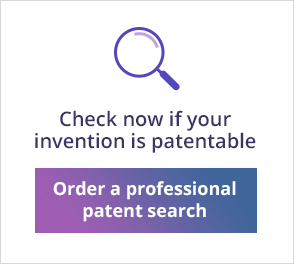When an inventor/ entrepreneur wants to get patent rights, one of the most important decisions he must take is in which countries he wishes to get a patent, using which filing mechanism (remember that a patent protects you only in the country that it was issued in) In this article we will discuss the various mechanisms for filing a patent and detail the pros and cons of each one.
Before we start however, let’s go over some basic terms in the patent world.

Basic patent terms explained
Patent – A right granted to an inventor by a state, giving him the prerogative to prevent anyone from using the invention in any way (sell, produce, import etc,), inside the borders of the state, for a defined period (usually 20 years).
Priority Date – The first filing date of the patent in the first country in which it was filed. This is the date to which any question is addressed such as “which patent is registered first”.
Paris Convention – Short for “International Convention on Intellectual Property” (Signed March 20, 1883). The Convention deals with a variety of intellectual property protections – Patents, designs, trademarks etc. The Paris Convention stipulates that the date of filing a patent in one country will be recognized as a “priority date” (see above) in the other member states, provided that the application is filed within 12 months of the first filing.
Patent Cooperation Treaty (PCT) – Signed in 1970. In this agreement, member states have established a series of uniform procedures for filing patent applications through a uniform application mechanism (“PCT application”).
Basic mechanisms for filing a patent
Before we go into a detailed explanation it is important to remember, that despite all international conventions and unification attempts, patent laws and regulations still vary from state to state. Therefore, before filing in any country, one should consult with a patent attorney/ agent who specializes in intellectual property law in the relevant state
1. Filing a single application in a single country
The application is filed (paying local filing fees). The examination process takes between several months and several years. If the patent is rejected, the inventor can appeal. At the end of the process, if the patent is approved, the applicant must continue to pay maintenance/ renewal fees for 20 years.
Benefits
This is the cheapest way and usually costs several thousands of pounds (search, drafting, filing, maintenance fees etc.).
Speed and simplicity – Filing in only one country, according to its own laws and regulations, having to go through a single examination process.
Disadvantages
Limited and narrow protection – The invention is protected in only one country. Elsewhere in the world, any person or company may freely manufacture, sell and market the invention. Although there are huge economies in the world that can constitute a significant market (USA, China, Japan, the UK etc.) in today’s global market, protection in a single country can be very problematic.
Limited patent value – Many inventors wish to get patent rights to be able to directly monetize the invention (i.e., sell it). A single national patent usually has limited value.
2. Filing in several countries under the Paris Convention (see above)
In this way, the inventor files an application in one of the member states of the Paris Convention (in accordance with its laws and rules) and over the next 12 months files patent applications in other member countries (complying with local laws and filing rules).
According to the Paris Convention, the patent’s priority date is considered the date of the first filing. For example – if a British inventor first filed in the UK in January 2022, then filed an application on the same invention in the U.S. in January 2023 the priority date of the US patent will be January, 2022.
Benefits
A strong international protection – The inventor gets patent rights protection in each country he filed in.
High commercial & economic value – Whether the inventor is interested in producing a patent-based product or intends to sell the patent, obtaining patents in a large number of countries increases the commercial value of the invention and the patent itself.
Disadvantages
High price – Each submission in each country may increase the price by thousands of pounds, sometimes more (translation costs, hiring local patent attorneys, local fees, litigation with each authority separately during the examination process, etc.).
Narrow timeline – From the moment of the first application, the inventor has 12 months to formulate, draft and submit applications in other countries.
Complexity – As stated, each country has its own laws & regulations. Adapting the application to each one (sometimes having to translate it), and separately examining/ appealing in each one, can not only be costly but be very complex and time consuming.
3. Patent Cooperation Treaty (PCT)
Another option is to file using the PCT mechanism comprising of the following steps:
- The inventor submits one first application to a local or regional patent office (for example the UK’s Intellectual Property Office, USPTO, the European Patent Office – EPO or the United Nations Intellectual Property Organization – WIPO) and pays a single set of fees.
- Get an international examination of the application in the authority in which it was filed.
- The national stage – After thirty month, the applicant chooses in which member countries he is interested in obtaining a patent, and files a separate application in each country and state (according to each country’s laws, paying local fees etc.).
Benefits
Simplicity, speed and relatively lower initial price – The inventor initially files only one application, pays one set of fees and gets a preliminary examination.
Examination – The results of the international examination gives the patent owner insights that allows him to refine and focus the invention at the critical stage – the national stage.
Time – The inventor has 30 months to develop, build, improve and raise resources for the benefit of promoting the patent itself and / or build a startup/ business.
Strong international protection and high commercial economic value – At the end of the process a patent is obtained in several countries.
Disadvantages
A complex and expensive national stage – as stated above it is ultimately necessary to file the patent in each and every country, to pay the local fees and go through the examination processes in each and every one.
4. Provisional Application (US Provisional)
In the US there is a type of application (hereinafter provisional) containing only a general description of the invention that is not examined or published. 12 months after filing a provisional the inventor must file a “regular” detailed application according to all rules, however the priority date will be considered to be the date when the provisional was filed.
Benefits
Price and simplicity – The inventor can file immediately, paying a very low fee.
Time – The inventor has 12 months to develop and gather resources without the invention being exposed to potential competitors.
Disadvantages
The invention is not examined and at the end of the 12 months a standard application must be submitted with all the complexity and costs mentioned above.
Summary and conclusion
In order to patent an idea, the inventor must go through a long and expensive process with many legal and technical complexities. A professional patentability search costs only a fraction of the whole process and maximizes your chance of getting a strong patent right protection, in the smoothest way possible.

